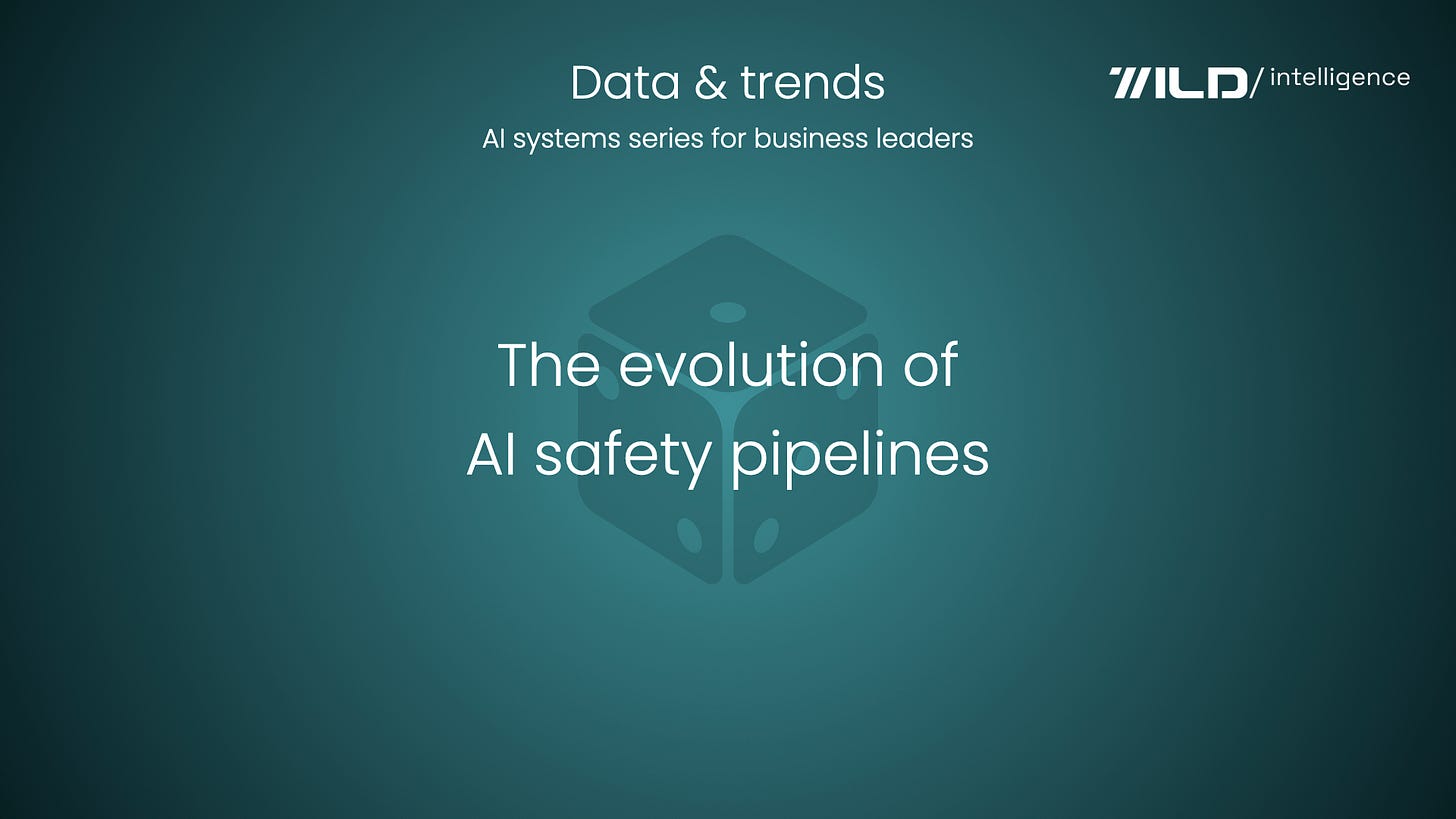🎲 The evolution of AI safety pipelines
AI data and trends for business leaders | AI systems series

Hello,
Small reminder: this is the second post of a new series in the data and trends section.
The new series presents another angle, slightly different from the previous series that seeded the TOP framework1 and serves as the building block of our vision of AI safety implementation.
In this new series, we focus on more advanced topics in subsequent weeks, where we'll delve deeper into specific measurement methodologies and implementation strategies.
I believe this series will contribute significantly to the ongoing development of robust AI safety practices.—Yael.
Previous post:
The evolution of AI safety pipelines
The evolution of AI safety pipelines represents a fundamental shift in how we approach system architecture.
We've moved from:
2023: Static, rule-based pipelines
2024: Adaptive, learning-based architectures
2025: Self-evolving, emergent architectural systems
This evolution isn't merely about scaling or optimization—it's about creating architectural systems that can anticipate and adapt to new forms of AI behavior. Traditional static architectures, designed for deterministic systems, fail to capture the dynamic nature of modern AI.
We need architectures that evolve alongside the AI systems they protect.
Consider the progression:
Gen 1 (2023): Linear pipelines, fixed rules
Gen 2 (2024): Branching pipelines, adaptive rules
Gen 3 (2025): Mesh architectures, emergent rules



